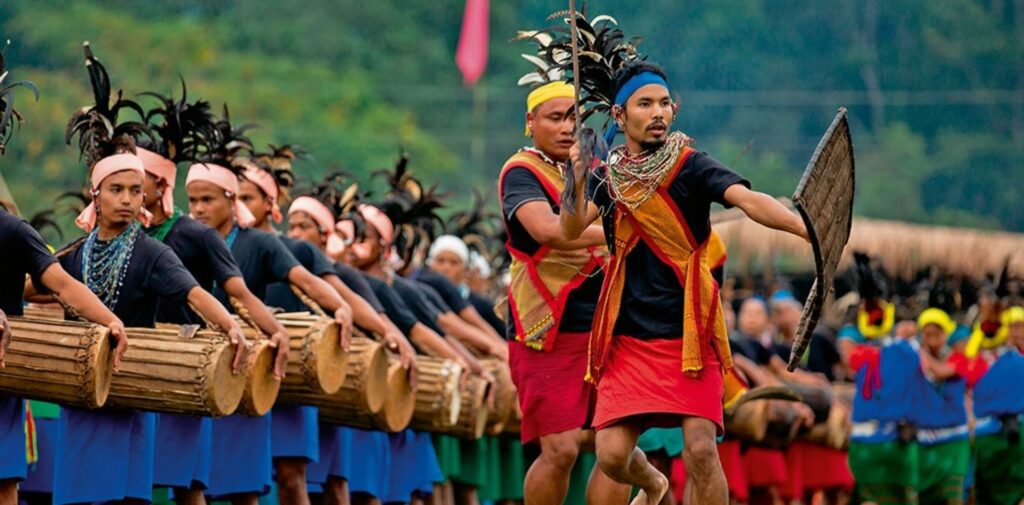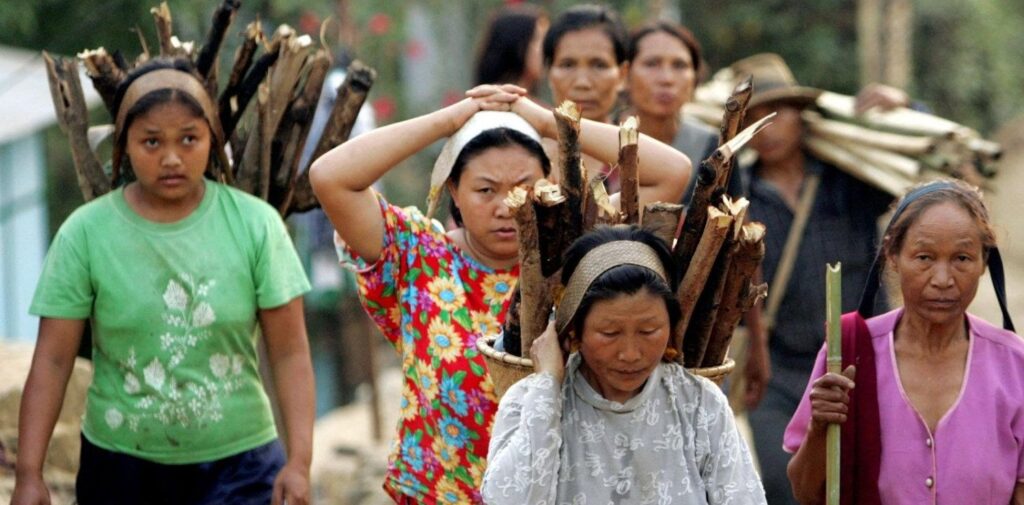India is a vast country with diverse cultures, languages, and traditions. While most people are familiar with the northern, southern, western, and central parts of India, there is another region in the country that often remains less talked about – the Northeast. This region is made up of eight states: Arunachal Pradesh, Assam, Manipur, Meghalaya, Mizoram, Nagaland, Sikkim, and Tripura. Each of these states has its own unique culture, history, and challenges. The people of the Northeast have a rich heritage, but they also face many political and social issues that are often different from those in other parts of India. In this article, we will explore the political landscape of India’s Northeast, the challenges it faces, and the aspirations of its people.
The Unique Diversity of the Northeast
The Northeast region of India is one of the most culturally diverse areas in the country. It is home to various indigenous communities, including tribal groups, ethnic minorities, and different language speakers. This diversity has shaped the region’s politics, with local issues often reflecting the concerns and aspirations of these different communities.
For example, Assam has a large population of Assamese-speaking people, along with several ethnic communities like Bodos, and also immigrants from Bangladesh. Manipur and Nagaland have their own distinct cultures and languages, and they are home to several indigenous tribes. Sikkim, once an independent kingdom, is home to a mixture of Nepali, Bhutia, and Lepcha communities. This diversity is one of the biggest strengths of the region but also contributes to the challenges it faces.

The Struggle for Autonomy and Identity
One of the most significant political issues in the Northeast is the demand for autonomy and the preservation of local identity. Many communities in the Northeast feel that their unique cultures and traditions are at risk of being lost in the larger, more dominant national culture of India. This has led to demands for greater political autonomy, with some communities seeking more control over their own affairs, including matters like education, language, and local governance.
In some states like Nagaland and Mizoram, these demands have even led to separatist movements. For example, the Naga people in Nagaland have long demanded greater independence, or even a separate state, to protect their culture and traditions. Similarly, the Mizo National Front (MNF) in Mizoram fought for autonomy before a peace agreement was reached in 1986, ending years of conflict.
While most of these separatist movements have been resolved through dialogue and agreements with the government, the feeling of being distant from the rest of the country still remains. Many people in the Northeast continue to feel that their region is neglected or misunderstood by the rest of India.
Ethnic and Language Conflicts
Another key issue in the Northeast is the ongoing ethnic and language-based conflicts. Since the region is home to a variety of ethnic groups and languages, tensions sometimes arise between different communities. In Assam, for example, the demand for Assamese as the official language has led to conflicts with non-Assamese speakers, particularly Bengali-speaking communities. The issue of illegal immigration from Bangladesh has also added to the tension, with many people in Assam fearing that the local Assamese identity is being threatened by outsiders.
In Manipur, there has been a long-standing conflict between the majority Meitei community and the Naga and Kuki tribes. Similarly, Bodo people in Assam have demanded a separate state for their community, which has led to violent clashes between the Bodos and other ethnic groups in the region. These ethnic tensions have sometimes resulted in violence and displacement, making it difficult for the region to move forward in terms of development.

Economic Development Challenges
The Northeast, despite its rich natural resources, has struggled with economic development. The region has an abundance of forests, minerals, and water resources, but due to political instability, poor infrastructure, and geographical isolation, it has not been able to fully capitalize on these resources.
Infrastructure development has been one of the most significant challenges. The region’s mountainous terrain and difficult landscape make it hard to build roads, bridges, and other forms of communication. This limits trade and business opportunities, making it difficult for the region to grow economically.
Additionally, the lack of industrial development has led to high rates of unemployment, especially among the youth. Many young people from the Northeast migrate to other parts of India, such as Delhi or Mumbai, in search of jobs. This has caused a brain drain, with skilled workers leaving the region, which further hampers local development.
The Role of Political Parties
The political landscape in the Northeast is complex, with several regional and national parties competing for influence. Many of the states in the Northeast have regional political parties that focus on local issues and demands for autonomy. For example, the Asom Gana Parishad (AGP) in Assam has been at the forefront of the fight for Assamese identity, while the Mizo National Front (MNF) in Mizoram and the Nationalist Congress Party (NCP) in Nagaland have represented local aspirations for self-rule.
On the national level, the Bharatiya Janata Party (BJP) and the Indian National Congress (INC) have also played a significant role in the politics of the Northeast. The BJP, in particular, has made strong inroads into the region in recent years. The party’s focus on development and improving connectivity has resonated with many people, and the party has been able to gain support in states like Assam, Tripura, and Arunachal Pradesh.
However, political parties from outside the region are often criticized for not understanding the local issues and aspirations of the people. This has led to a sense of alienation, as many in the Northeast feel that their concerns are not being adequately addressed by national parties. Regional parties continue to argue that decisions about the Northeast should be made by people who understand the local culture and problems.

Aspirations of the People in the Northeast
The people of the Northeast have many aspirations, most of which revolve around improving their economic conditions, preserving their cultural identities, and gaining greater political power. The demand for more autonomy remains strong, but people also want to see their region develop. Education, healthcare, infrastructure, and job opportunities are key issues that matter to the people of the Northeast.
Many communities in the region aspire to have more control over their own resources, such as forests and water bodies, to protect their culture and traditions. They also want to be included in the national decision-making process, as they believe that their unique challenges and concerns are often ignored by the central government.
At the same time, the youth of the Northeast are eager for employment opportunities and better access to education. They want to be able to build a future in their own region rather than having to migrate to other parts of India in search of work. They hope for a time when the Northeast can be connected with the rest of the country not just in terms of roads and railways, but also in terms of economic growth and opportunities.
Conclusion
The political landscape of India’s Northeast is shaped by a complex mix of ethnic diversity, historical conflicts, and aspirations for self-governance. While the region faces many challenges, such as ethnic tensions, economic underdevelopment, and demands for autonomy, it also holds immense potential for growth and progress.
The people of the Northeast are proud of their rich cultures and histories, and they hope for a future where their voices are heard and their aspirations are fulfilled. As India continues to grow and develop, it is important that the Northeast is not left behind. Only by addressing the region’s unique issues, fostering peace and understanding among different communities, and focusing on economic development can India unlock the full potential of its Northeast. The future of the Northeast is closely tied to the future of India as a whole, and a united, inclusive approach is the key to a prosperous and harmonious future for all.




